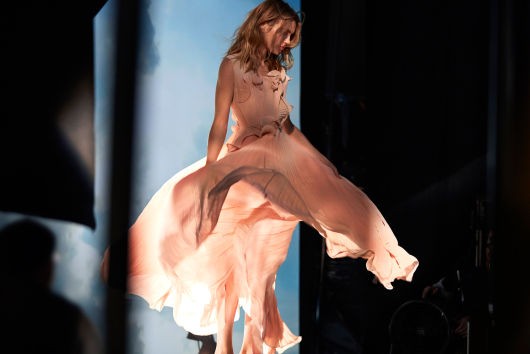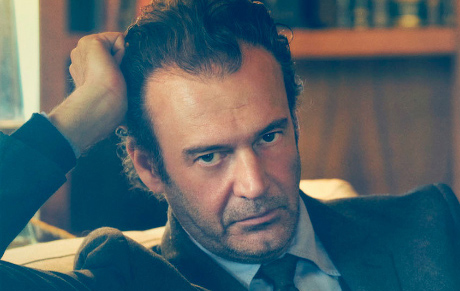CONFUSION IS THE SOLUTION
 La supermodel Natalia Vodianova testimonial della nuova linea Conscious Exclusive Collection di H&M
La supermodel Natalia Vodianova testimonial della nuova linea Conscious Exclusive Collection di H&M
Nel mondo della moda etica c’è movimento. E forse anche un po’ di confusione. La corrente più recente chiede un blocco allo spreco, cioè si scatena contro il mercato low cost colpevole – a suo avviso – di generare troppa merce a basso costo, roba del tutto superflua e prodotta in modo inquinante per l’uomo e per l’ambiente. Chi protesta non tiene in alcuna considerazioni gli elementi “democratici” del fenomeno, che fornisce un prodotto passabile a prezzi bassi, levando agli abiti quell’aura di inaccessibilità che avevano fino al secolo scorso. Bene o male? Bisogna tornare al vestito d’élite, inarrivabile per la gente comune, per salvare il pianeta? Il problema è complesso e non si può risolvere qui ma, in ogni caso, il quesito va posto. E gli interessi in ballo sono tali da non rendere “super partes” nessuno.
La grande distribuzione risponde intanto alle pressioni biologiche con un massiccio impiego di lane e cotone naturali. Il colosso H&M addirittura commercializzando abiti ottenuti dal Bionic, un poliestere ricavato dai rifiuti plastici del mare. Un’intera collezione. Uomo, donna (il bambino si vedrà), testimonial Natalia Vodianova, million dollars baby delle passerelle dove indossa – in genere – abiti costosissimi. Adesso, in un potente crossover, la ragazza porterà alla gloria un fluttuante caftano da pochi soldi, ecologicamente corretto e stilisticamente tollerabile. Un abito “buono” come quelli prodotti da quelle aziende del lusso che curano il refluo delle acque, l’impatto ambientale, le emissioni di CO2 e che pagano a prezzi di mercato la forza lavoro producendo in Italia o in altre democrazie occidentali. Ricaricando i costi sui prezzi del consumatore finale. Di nicchia.
Se si obietta che la forza del prezzo basso è dovuta alla massa di merce commercializzata, si torna alla prima casella, come nel Gioco dell’Oca. Cioè si nota come in confini dell’ecologicamente corretto e di quello scorretto siano labili e passibili di interpretazioni diverse.
Per non lanciare nulla di intentato ci si butta anche sul ricino. L’italiana Freddy ha appena brevettato delle sneakers eco friendly senza plastica a base di un tessuto ricavato dalla pianta dell’amarissimo olio. Per ora da donna, progetto in itinere.
Confusione, si diceva, forse entropia. Perché molte aziende del lusso, intanto, si lanciano a braccia aperte sul mondo dell’arte. Come il virtuoso Brunello Cucinelli. Uno dei pochi imprenditori del lusso che riescano a sposare materia prima di grande qualità, moda, cura delle maestranze e cultura umanistica. Così, se Della Valle ha sponsorizzato i restauri del Colosseo e Prada promuove una mostra alla milanese Fondazione di Largo Isarco per salvare piante ed animali estinti riproducendoli in serra (Extinct in the wild di Michael Wang), Cucinelli si ripropone, più pragmaticamente, di aiutare la ricostruzione dell’Abruzzo. Tutto si muove. Ma la strada è da definire. Luisa Ciuni
In the world of ethical fashion there’s bustle. And maybe a little of confusion. The most recent current asks for a stop to wastefulness, lining up against the low-cost companies, guilty – in its opinion- of making too much products, that are completely superfluous and whose production is polluting. Who protests doesn’t care about the “democratic” elements of this phenomenon, that guarantees an acceptable quality of the products with low prices, removing from clothes that air of unavailability that they had since the last century. Is it good or bad? Do we have to go back to the elitist clothing, untouchable for the common people, to save the planet? The problem is complicated and we can’t solve it here but, in any case, the matter has to be debated. And the interests are so many and so important that nobody can be considered “super partes”. The large retailers, as a reply to these pressures, use a great amount of natural wool and cotton. H&M even sells clothes made of Bionic, a kind of polyester obtained from plastic wastes coming from the sea. An entire collection. Man, woman (maybe kids in the future?), with Natalia Vodianova as testimonial; a million dollar baby of the catwalks, where she uses to wear very expensive clothes. Now, in a powerful crossover, she’ll glorify a fluctuating cheap dress, ecologically correct and stylistically tolerable. A “good” dress, like those made by those luxury companies that take care of the water sewage, the environmental impact, the CO2 emissions and pay properly their labor force, producing in Italy or other occidental democracies. Recharging costs on the final prices. If the objection is that the strenght of the low price is due to the amount of sold goods, we return to the first slot, like in the game of the goose. In this way we can notice how evanescent and unclear are the boundaries of the ecologically correct/wrong. Not to leave anything untried some try with the castor-oil plant. The italian brand Freddy has just patented eco-friendly sneakers made of a fabric derived from the plant of the bitter oil, a developing project (now they’re only for women). Confusion, maybe entropy. Because many luxury companies, in the meanwhile, promote art. Like Brunello Cucinelli. One of the few businessmen that is able to combine very high-quality materials, fashion, care of the workforce and culture. So, while Della Valle has sponsored the Coliseum’s restoration and Prada has promoted an exhibition in its Fondazione in Largo Isarco, Milan, to save plants and animals (“Extinct in the wild” by Michael Wang), Cucinelli has the more pragmatic purpose of helping with the reconstruction of the Abruzzi. Everything is moving. But the path has to be traced. Luisa Ciuni





